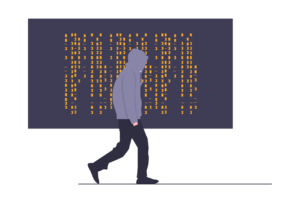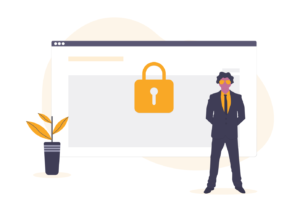Hackers are often unpredictable and know their way around the internet. They commit hacks for different purposes, some hackers have good intentions and others don’t. Here are the top five biggest hacks and some tips to help you prevent any online threats!
The conficker hack
The computer worm first appeared in October 2008. Conficker uses a bug in the Windows service, which exists in several Windows versions. When Conficker lands on a computer, it disables various system services.
Conficker stole personal data, sent spam, and carried out a coordinated attack on other systems remotely. The worm affected government organizations, banks, and other services. Conficker has hacked more than 10 million Windows computers in more than two hundred countries.

The cyber-attack on Sony Entertainment Pictures
The cyber-attack on Sony Entertainment Pictures took place on November 24 in 2014. The Guardians of Peace (a group of hackers) claimed responsibility for this attack. The FBI blamed North Korea for this hack, but North Korea denied the charges. Evidence from the FBI suggests that (former) employees were involved.
A large amount personal data of employees, celebrities and companies were extracted. The damage was an estimated amount of 85 million euros. To this day we still don’t know who the perpetrators of the Sony Hack are.
The T.J. Maxx & Marshalls Hack
T.J. Maxx is an American department store chain, which includes the company, Marshalls. The data was stolen from at least 45.7 million shoppers’ debit cards, including T.J. Maxx & Marshalls. This concerned transactions from January 2003 through November 23 of that year. This is the largest case of consumer information infringement.

Did you know that the EU has made strict regulations protecting customer and employee data?
The Stuxnet hack
Stuxnet is a malicious computer program created by the intelligence services of the United States and Israel. The malicious software was discovered by an antivirus software manufacturer from Belarus in June 2010. The virus had the goal to sabotage Iranian ultracentrifuges used in the nuclear program.
Stuxnet stands out among the hacks because of how effective it is. The Stuxnet payload consists of three parts: the worm itself, an LNK executable (which allowed the worm to run automatically), and a rootkit (hides the worm’s existence).
The Microsoft Melissa virus
It’s a simple virus, but it ended up costing $80 million in damage. The Melissa virus automatically spread itself as an email attachment and affected Microsoft Word documents. The virus became active on March 26, 1999. The virus was sent to the first fifty names listed in the Outlook email address of an infected computer.
At more than three hundred companies and government agencies around the world, email servers became overloaded, causing some to shut down. In addition, a million email accounts were disrupted, and internet traffic was severely slowed down.
After reading about the top 5 biggest hacks, you may be wondering how best to protect and recover your data from a hacking attack. VBoxx can help you with this!
How do you protect your data?
Thanks to the security and encryption of vBoxxCloud, your employees can access files anywhere, while keeping confidential information safe. Are your files safe from ransomware? Recover files (including filename) in just a few clicks!
- Find out the time of the infection: Check the activity log to find out when the virus started encrypting the files.
- Make a copy of the correct files: One second before the virus has started encrypting the files, the Snapshot feature can restore a copy of the cloud.
- Link the users to the new team share: Link the users to the new team share and everyone can continue working.

Tips against hacks
In short, you can learn from these five hacks and prevent a hack through these five tips:
Update your operating system
Every year, Apple and Google release a software update with the latest version of their operating systems. Because of this update is your smartphone or tablet faster, more secure and you have access to new features. It differs per device how often you get such an update and how long it takes before you receive it.
Install a virus scanner
A virus scanner or antivirus ensures that viruses have no chance to cause damage to your device. Antivirus fights against the viruses on the internet, by constantly scanning your computer for dangerous programs.
Store your files in a secure cloud
If you use a secure cloud platform which offers encryption and guarantees your privacy you can protect your files against any intrusion. If your files change because of ransomware, you have tools to help you recover them.
Use a secure VPN connection
A VPN acts as a secure tunnel which hides your location and makes it more difficult for hackers to find your IP address. The VPN will prevent the hacker from viewing or changing any data on your computer if you accidentally connect to a hacker’s network.
Use a good firewall
Using a firewall is a practical and essential element if you want to keep unwanted intrusions at bay. It ensures that no network traffic can slip past you without permission. Some cloud solutions such as vBoxxCloud already include this, but if you are working with a dedicated server, you can also set up your own firewall.
Do you want to protect yourself from a hack attack?